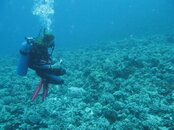Maybe they would be better off sticking with the 31 hour requirement, rather than going with the instructors assessment of performance.
This is the element that is so subjective, and has become so watered down.
In educational terms making sure that all the teachers have the same *interpretation* of "mastery" is called "calibration".
What happens over time is that instructors can, and often do, lose calibration, or in other words, their bar changes. This can also go both ways. Some instructors' bar will lower and other instructors' bar will raise. Both are losing calibration, meaning that they are both no longer doing what was expected of them when they were first trained.
I guess you could argue that an instructor whose bar "slips up" isn't as dangerous as one whose bar "slips down" but in both cases the agency *should* (but do not) make use of their network of CD's in order monitor and if necessary re-calibrate individual instructors in their area.
Doing so would fall under something that could be called "quality control". No agency out there right now (including PADI, who does lip service to quality control but does nothing to follow through with meaningful action) has a meaningful quality control system. In my opinion, without this, no measure you can take (whether steering to "mastery" or steering to a given number of hours for the course) will make a damned bit of difference to the real quality being delivered where the rubber meets the road.
In other words, an instructor whose bar has "slipped down" isn't suddenly going to start delivering a better course because he's forced to spend more time on it. All he'll do is spend more time delivering the same crap he does now.... worst case, the students will also have to pay more for the same crap.
If you ask me, this touches on the biggest problem in scuba diving training bar none. There is *no* meaningful quality control at all.
NASE will have the same problem. Standards, which is nothing more than a checklist, and nice promo-videos and threads on the internet don't teach students. Instructors do. So the most relevant question to NASE is how they are organising their QA, because that's what's going to make sure that instructors don't lose focus on quality ... and without meaningful QA, it will have the same problem that all the other agencies have.
R..




